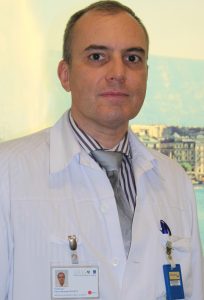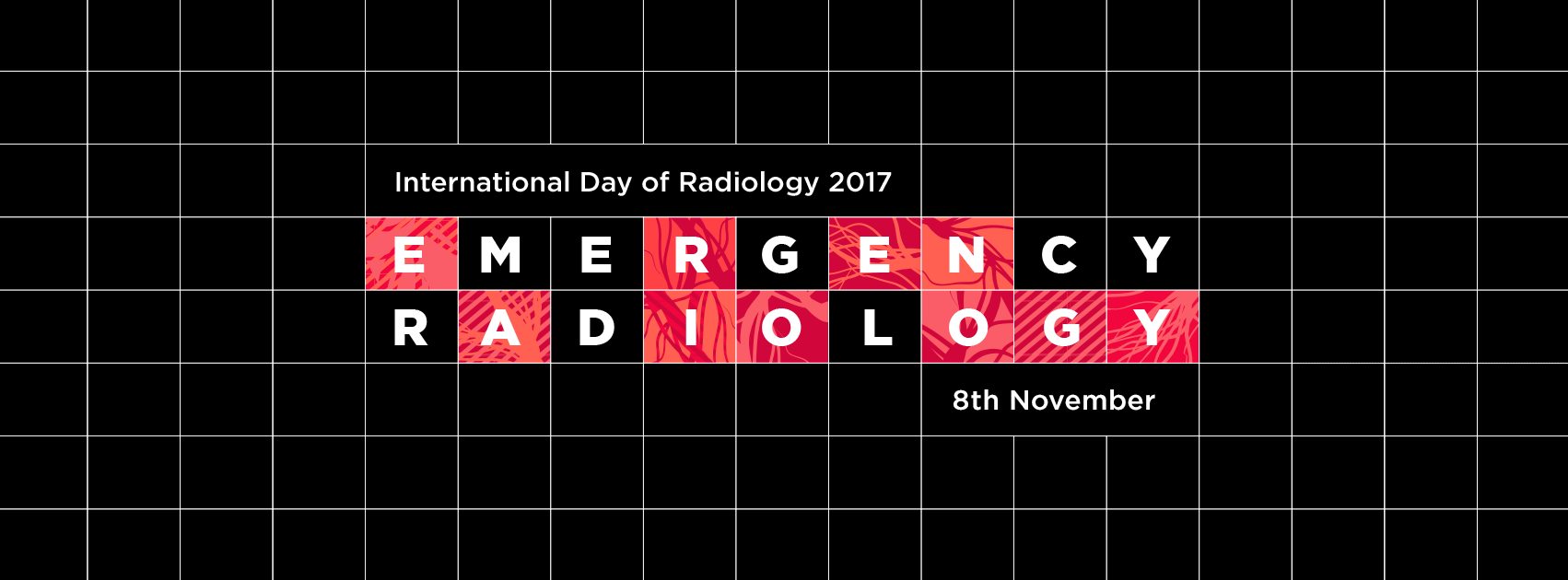CT examinations up by more than 300% over 15 years, while number of emergency patients has increased only 10% says Swiss specialist
This year, the main theme of the International Day of Radiology is emergency radiology. To get some insight into the field, we spoke to Swiss radiologist Prof. Pierre-Alexandre Poletti, currently in charge of the emergency radiology unit and vice-chairman of the radiology service at the University Hospital of Geneva in Geneva, Switzerland.
European Society of Radiology: Could you please describe the role of the radiologist in a typical emergency department in your country?
Pierre-Alexandre Poletti: Emergency radiologists in Switzerland adhere to the most appropriate imaging protocols and algorithms for emergency patients to optimise and expedite the radiological management of emergency-department patients in term of quality of care and improvement of workflow.
Also, radiologists have to teach the fundamentals and the specifics of emergency radiology to the radiology residents in the emergency department. They must establish links and close collaborations between the emergency radiology team and the various subspecialties in radiology.

Prof. Pierre-Alexandre Poletti is currently in charge of the emergency radiology unit and vice-chairman of the radiology service at the University Hospital of Geneva in Geneva, Switzerland.
ESR: What does a typical day in the emergency department look like for a radiologist?
PAP: As part of their workflow, emergency radiologists work using various imaging modalities (mainly CT, ultrasound and conventional radiology) chosen to adapt to the specific clinical suspicions of the emergency physician. The senior radiologists supervise the examinations performed by the residents to discuss specific problems they may have. The radiologists participate in multidisciplinary events, such as case presentations, journal clubs, and morbidity and mortality meetings.
ESR: Teamwork is crucial in the emergency department. How is this accomplished in your department and who is involved?
PAP: Representatives of the radiological team have regular meetings with various emergency-team members to address the radiological and clinical-management concerns of emergency patients. Complex problems, such as the optimisation of imaging protocols and algorithms, are referred to small reflection groups, who will meet and return to their colleagues with a proposed solution.
ESR: How satisfied are you with the workflow and your role in your department? How do you think it could be improved?
PAP: Workflow is one of the main problems radiologists face in the emergency room, especially as it relates to CT imaging. Indeed, in our institution, like probably in many other hospitals, the number of CT examinations performed annually has increased by more than 300% (4,500 to 15,000) over a 15-years period, while emergency department admissions have increased only by about 10% during the same period. The satisfaction of emergency radiologists is linked directly to their ability to solve problems associated with this increased workload: long wait times for CT scans; psychological effects of heavy workloads on the radiological team; and disagreement with clinician colleagues regarding patient triage for the scanner. Radiologists should have a leading role in suggesting solutions to attenuate the effects of the increasing workflow, in close partnership with their clinician colleagues.
These solutions consist of a reflection about the optimal guidelines and algorithms that should be adopted for CT imaging under the most frequent clinical conditions. The reporting procedures must be simplified by using standardised templates, adapted to every situation.
ESR: Which modalities are used for different emergencies? Could you please give an overview sorted by modalities?
PAP: Conventional radiology, ultrasound and CT scans are the most frequently used imaging modalities in the emergency room.
Conventional imaging is used mainly for the workup of bone trauma; dyspnoea; and, to a lesser extent, diffuse abdominal pain (e.g. suspicion of ileus or pneumoperitoneum) or detection of foreign bodies.
Ultrasound imaging is used for imaging both trauma (about 20% of all ultrasounds) and nontrauma patients (80% of all ultrasounds). Ultrasound in trauma patients essentially consists in focused assessment with sonography for trauma (FAST) examinations (for intra-abdominal bleeding) and, more rarely, for the assessment of muscular injuries. In nontraumatic conditions, ultrasound is most frequently used (>50% of all ultrasounds) for the assessment of abdominal pain, essentially cholecystitis and appendicitis. The most frequent other indications for nontraumatic ultrasound are urinary tract diseases (about 20%), soft tissues collections (about 15%) and acute scrotal pathologies (about 10%).
CT is the reference standard for the investigation of polytrauma patients. In minor trauma patients, CT is used increasingly often for the detailed assessment of peripheral bone trauma. About 50% of the indications for CT scans in emergency room consist of neurological conditions, such as stroke and other vascular pathologies, acute headaches (e.g. suspicion of intracranial bleedings), infections or epilepsy. Nontrauma indications for body CTs consist mainly of acute abdominal conditions (e.g. infections, bowel obstruction, pancreatitis, ischaemia) and in acute thoracic pain (e.g. infections, pulmonary embolism and aortic dissection). Acute vascular occlusions of the lower limbs also are common indications for CT in the emergency room.
In Switzerland, MRI is used mainly in emergency cases for brain and spine imaging. In body imaging, MRI usually is limited to pregnant patients. In 2014, 33% of Switzerland’s hospitals had a specific protocol for running MRI during the on-call periods.
ESR: Is teleradiology an issue in emergency radiology? If yes, how so, and how often is it used?
PAP: Teleradiology is important in the emergency room; it is used in the vast majority of hospitals in our country. However, there is wide variation in how this technology is used. In small, peripheral hospitals with a limited number of emergency patients and a small radiology team, teleradiology is used to centralise image interpretation for many hospitals by a single on-call radiologist and thus maximise resources. In larger centres, teleradiology is used mainly by the radiology resident on call in the emergency department to send images for expert advice from an attending radiologist, who is on call at home.
ESR: Are emergency radiologists active anywhere other than emergency departments? Do they have other non-emergency roles, or other emergency roles in other departments?
PAP: There is a large variation in the organisation of emergency radiology throughout the country, and there is no nationwide standardisation. In some large university centres, emergency radiologists are dedicated mainly to emergency radiology: this is the situation in 47% of medical institutions in our country, based on a 2014 survey. Occasionally, they can lend a hand to fill in for a colleague in other radiological specialties, or to lead a meeting in general radiology. In smaller hospitals, emergency radiologists are members of the general radiological team (the situation in 53% of our hospitals); they are trained in multiple disciplines, and therefore work as radiologists in general radiology, as well. Emergency radiologists are generally not involved in non-radiological departments.
ESR: Do you have direct contact with patients and if yes, what does it entail?
PAP: A direct contact between the radiologist and the patients, especially for ultrasound and CT imaging, is important in emergency radiology, especially in critical situations. This contact, which can be simple and brief, usually is established when the patient arrives in the examination room. It has two main purposes: first, to reassure and comfort the patient; and second, it gives important information to the radiologist about the patient’s general condition. This is helpful for the interpretation of the examination. Thus, the radiologist will be able to focus his attention on the main problem, rather than being disturbed by distracting findings without connection to the acute condition. Residents are taught that their radiological findings should match with their personal evaluation of the patient. For instance, a normal brain CT in a very dizzy patient points to a possible misinterpretation, while the same CT interpretation would be more reliable if the patient has recovered a normal alertness.
ESR: How are radiologists in your country trained in emergency radiology? Is emergency radiology a recognised specialty in your country?
PAP: There is no standardised training in emergency radiology in Switzerland. Every hospital has its own training programme. In 2014, 40% of our hospitals had a radiology unit specifically dedicated to emergency radiology where residents could be trained specifically in this field under the supervision of an attending emergency radiologist. The Swiss Society of Radiology (SGR-SSR) often organises focused sessions about emergency radiology during its annual meeting. Every year since 2015, the Swiss Society of Emergency Radiology (SSER) organises a national symposium dedicated to emergency radiology.
Emergency radiology is not recognised officially as a radiology subspecialty in our country (e.g. there’s no specific curriculum). However, our national society of radiology supports and nurtures its development.
Prof. Pierre-Alexandre Poletti is currently in charge of the emergency radiology unit and vice-chairman of the radiology service at the University Hospital of Geneva in Geneva, Switzerland.
After completion of his radiology boards in Geneva in 1999, he obtained a fellowship in emergency radiology at the Baltimore Shock Trauma Center at the University of Maryland in Baltimore, Maryland, United States.
Prof. Poletti is leading a research group on emergency radiology and has authored or co-authored about 100 peer-reviewed publications. He is dedicated to the promotion and development of emergency radiology nationally and internationally; he gives and organises numerous lectures, tutorials and refresher courses at national and international meetings in this field.
He has participated to the foundation of the Swiss Society of Emergency Radiology (SSER), and is currently its president.
Read our interviews with expert emergency radiologists from 29 different countries here.


